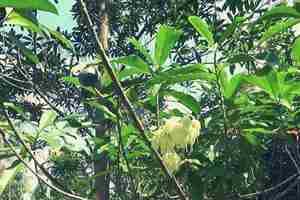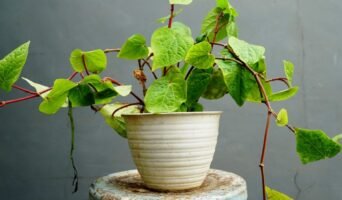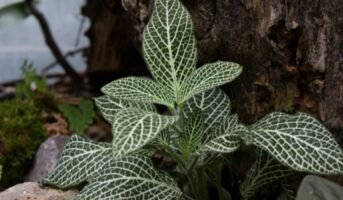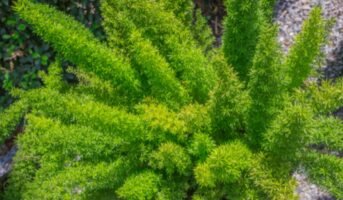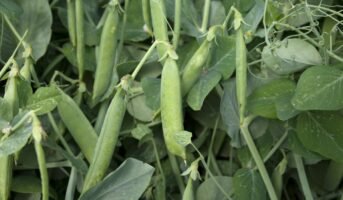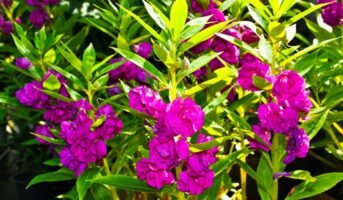The rudraksha plant, scientifically known as Elaeocarpus ganitrus, is an evergreen plant species that is famous in the Indian subcontinent for its fruit, the rudraksha plant beads, which are of tremendous importance in the Hindu culture.
Spanning out over 35 different subspecies, the original rudraksha plant, which also happens to be the most famous, starts its roots from the Gangetic plains and runs down to the base of the Himalayas. The rudraksha plant grows fast, bearing fruit in a little over just three years. This plant has been regarded as one of the most auspicious plants in Hindu culture, and its fruits are converted into beads that are said to possess healing properties.
See also: Should the Tulsi plant be given as a gift?

Source: Pinterest
The word ‘rudraksha plant’ stems from two terms: ‘Rudra’, which means Lord Shiva, and ‘aksha’, meaning eye. Together, this word translates to ‘Lord Shiva’s eye’ and is a testament to the third eye of the deity. Legend has it that Lord Shiva used to wear a garland made out of rudraksha plant fruit, and it has been carried down to generations of pandits and their families, eventually spanning out to the entirety of the Hindu population.
People use a mala that consists of 108 rudraksha plant beads and is used to chant Hindu prayers. While there are a lot of assumptions about the exact origin of Rudraksha tree, people have not been able to pinpoint its exact location of origin.
Rudraksha plant: Key facts
| Scientific name | Elaeocarpus ganitrus |
| Common name | Rudraksha plant, woodenbegar |
| Family | Elaeocarpus |
| Mature size | 5-10m wide, 8-15m tall |
| Nativity | India |
| Soil type | Rich, well-drained |
| Soil pH | Neutral |
| Plant type | Evergreen |
Rudraksha plant: Physical description
The rudraksha plant grows up to a height of 15 m on average and usually has buttress roots at the base of the trunk. It has leaves that are about 60-180 mm long and 40-60 mm wide with a wave-like serrated structure. For a brief time period, the leaves turn red shortly before they die and fall off.
Mature trees grow in buttresses that encase the whole base of the trunk in a circular manner. This is speculated to be an adaptation for becoming emergents in specific habitats. Buttress roots come in handy when the plant needs a rigid and firm grip on the soil. The composition of buttress roots is also completely different from that of the trunks.
Rudraksha plant: How to grow?
The rudraksha plant bears round, blue fruits and is manageable and easy to grow. It can be propagated through seeds or through stem cuttings. Just break the seed into two and plant it at a depth of 7-10 inches. If you’re growing the rudraksha plant in a pot or a container, make sure it has at least 15-18 inches of depth and 7-10 inches of width. It also should have good drainage as it is crucial for the rudraksha plant. Use Terracotta pots for best results.
If propagating through a stem, just get a well-grown rudraksha plant from the nursery or a garden centre and transplant it to the garden, be sure to plant it in a place that receives at least 5-6 hours of sunlight every day.
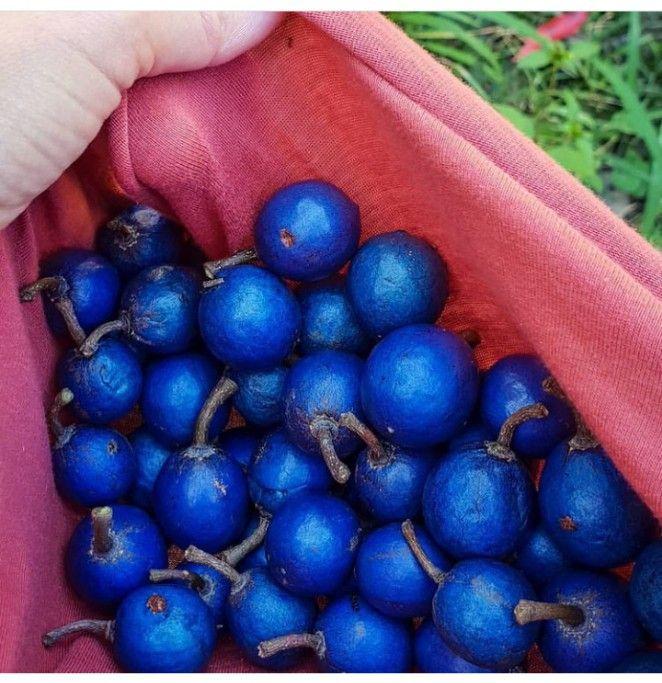
Source: Pinterest
Rudraksha plant: Care tips
Rudraksha plant: Fertiliser requirements
Nourish the soil with plenty of organic matter before planting. This is enough to keep the rudraksha plant sustained for its growing years. To speed up its growth, use a balanced liquid fertiliser diluted to half its strength every 6-8 weeks. Carry this tradition on until the plant reaches a height of 5-6 feet.
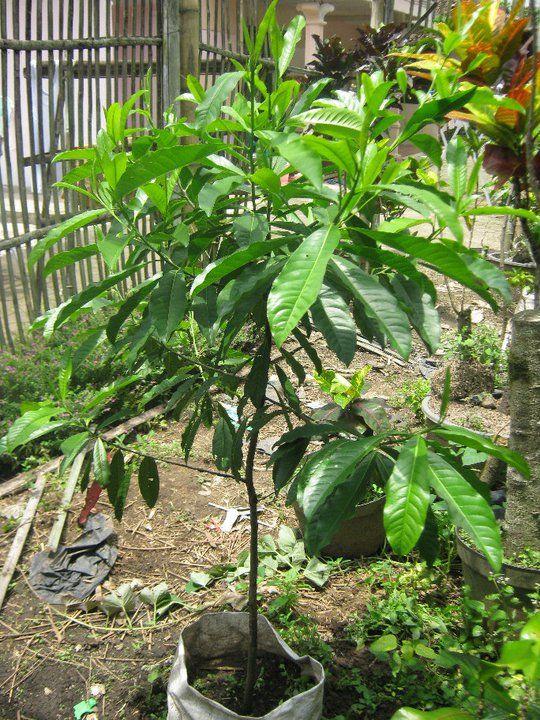
Source: Pinterest
If you’re planning to go all organic, you can use cow dung fertiliser regularly to provide the nourishment it needs. Be mindful not to use liquid fertiliser in winter to ensure the rudraksha plant’s proper growth.
Rudraksha plant: Pruning
Pruning can also be done to encourage the growth of newer branches. This can be done by cutting off withered branches. This will also encourage increased fruit production.
Rudraksha plant: Soil requirements
The rudraksha plant is lenient when it comes to soil. It can be grown in your local garden soil with a little blend of coco peat and perlite.
Rudraksha plant: Watering requirements
Water the young plant every time the topmost layer of the soil feels dry to the touch. Do this until the plant reaches a height of about 8-10 feet. For growing outdoors, make sure you have at least 30×30 sq ft. of ground.
Rudraksha plant: Pest and diseases
The rudraksha plant is easy to keep away from pests. If you find any, a good old solution of neem spray works just fine. As for diseases, the rudraksha plant is prone to root rot and fungal infections, which can be easily prevented by taking care not to overwater or underwater the plant.
Rudraksha plant: Uses and benefits
The rudraksha plant has a number of medicinal as well as spiritual benefits apart from being one of the most significant plants in Hindu mythology.
The leaves of the rudraksha plant are believed to have several antibacterial and anti-inflammatory properties. The leaves of the rudraksha plant are used to treat wounds and conditions like epilepsy, migraine, and headaches.
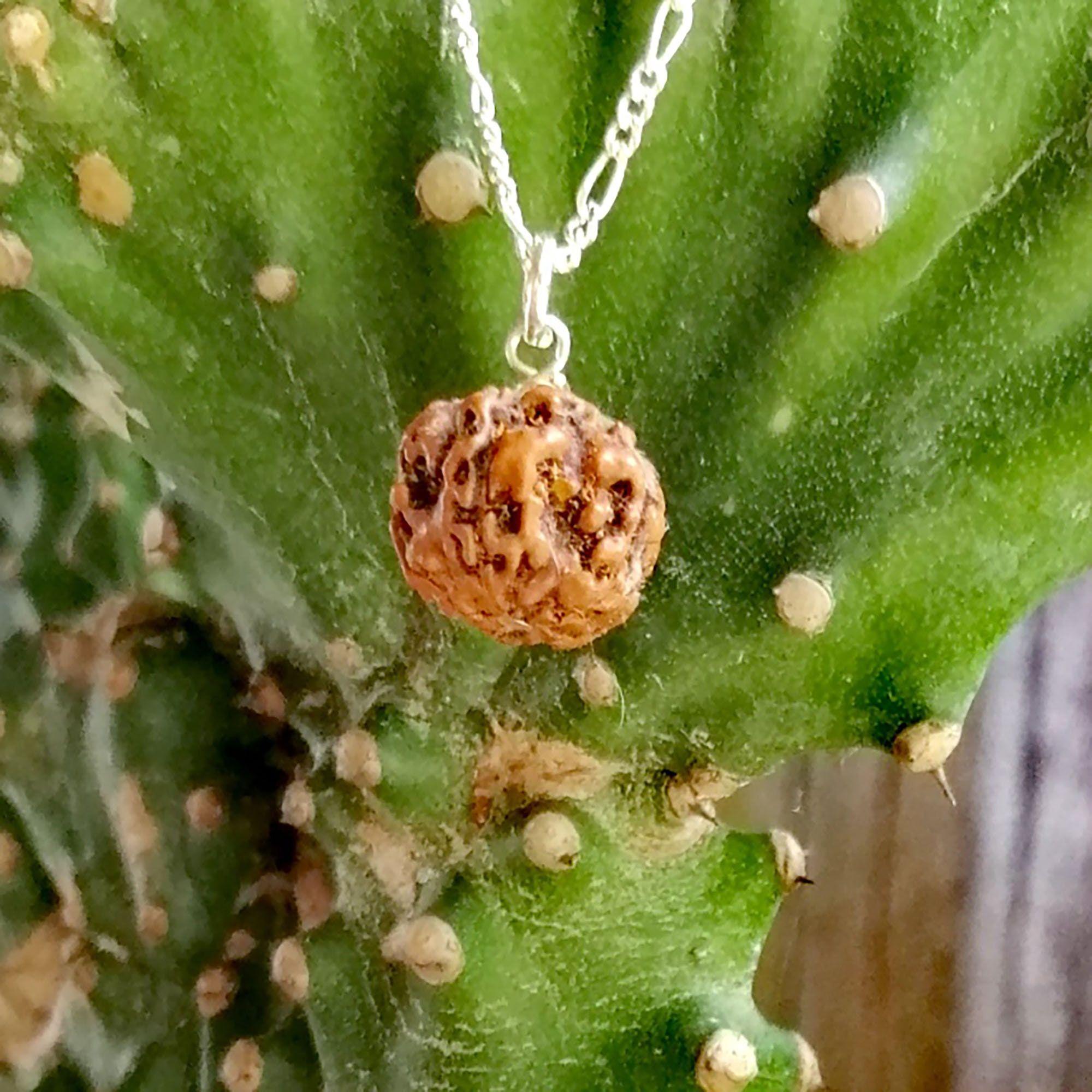
Source: Pinterest
It also has a few dermatological benefits. The nut is beaten into a paste and then mixed with rose water to be applied to the skin. This paste heals and moisturises the area of the skin to which it is applied.
According to Ayurveda, nuts also help in the purification of blood and stimulate healthy blood circulation in the body. The beads of the rudraksha plant also have various inflammatory properties.
Spiritual benefits include stress relief, aura healing, energy fixation and a lot more.
In addition to the medicinal and spiritual benefits, the Rudraksha tree is widely used as a landscape tree for ornamental purposes.
Can we grow Rudraksha tree at home as per Vastu?
You can plant a Rudraksha tree, which is regarded auspicious, in your home garden. According to Vastu Shastra, the presence of a Rudraksha tree near the house will keep evil energies away. Grow the Rudraksha tree in an area that receives adequate sunlight.
Rudraksha tree: Cultural significance
The Rudraksha Tree holds great significance in Hinduism, with its name originating from the Sanskrit language. “Rudra” refers to Lord Shiva, and “aksha” means “eye.” Thus, the sacred beads derived from this tree are considered to be Lord Shiva’s third eye. These beads hold immense importance and are frequently used during prayers. It is believed that Lord Shiva adorns a garland made of Rudraksha beads, and many Hindus use a mala consisting of 108 beads for their devotional practices. The trees found in the Himalayan regions are particularly revered for their profound spiritual energy. The Himalayas, specifically Kailash, are believed to be the dwelling place of Lord Shiva, as mentioned in various scriptures.
FAQs
How many rudraksha plant beads does a mala have?
A traditional rudraksha plant mala has 108 beads.
What is the story behind the significance of the rudraksha plant?
The nut of rudraksha plant is said to be a descendant of lord Shiva’s third eye, which is of immense significance in the Hindu culture. The beads of the rudraksha plant are used to make a chanting mala which is used in prayers.
Housing News Desk is the news desk of leading online real estate portal, Housing.com. Housing News Desk focuses on a variety of topics such as real estate laws, taxes, current news, property trends, home loans, rentals, décor, green homes, home improvement, etc. The main objective of the news desk, is to cover the real estate sector from the perspective of providing information that is useful to the end-user.
Facebook: https://www.facebook.com/housing.com/
Twitter: https://twitter.com/Housing
Email: [email protected]
